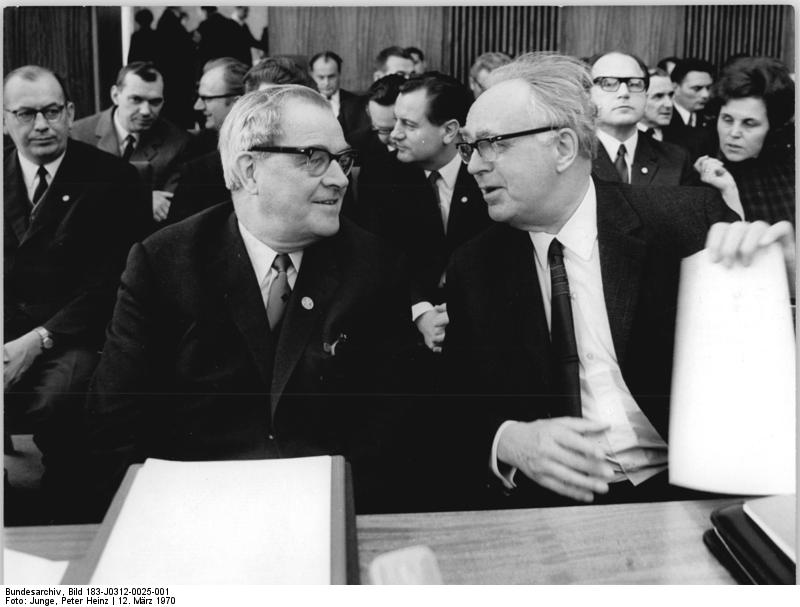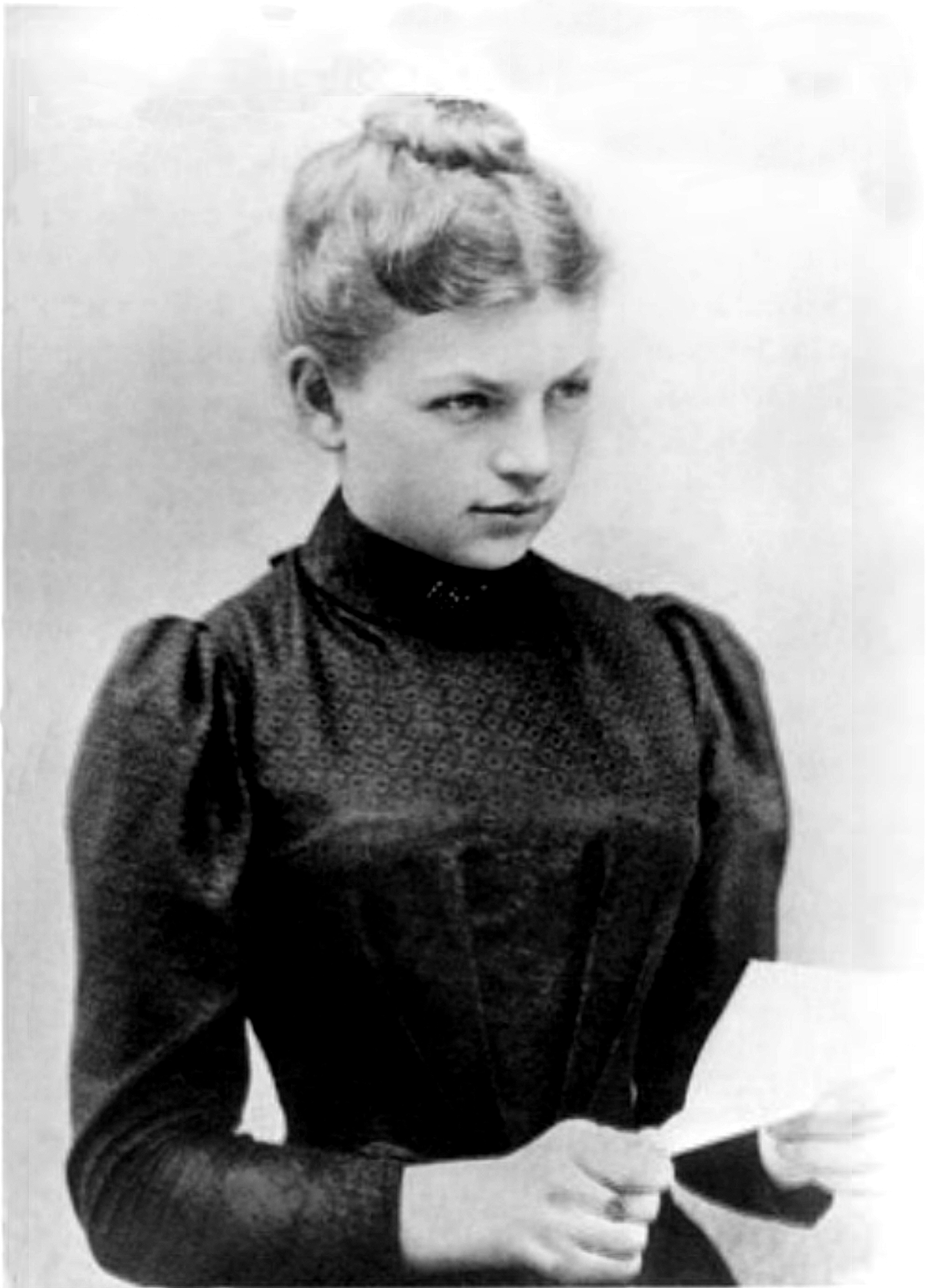|
Peter Adolf Thiessen
Peter Adolf Thiessen (6 April 1899 – 5 March 1990) was a German physical chemist. He voluntarily went to the Soviet Union at the close of World War II, and he received high Soviet decorations and the Stalin Prize for contributions to the Soviet atomic bomb project. Education Thiessen was born in Schweidnitz (modern Świdnica, Poland). From 1919 to 1923, he attended Breslau University, Albert Ludwigs University of Freiburg, University of Greifswald, and University of Göttingen. He received his doctorate in 1923 under Richard Adolf Zsigmondy at Göttingen.Hentschel, 1996, Appendix F; see the entry for Thiessen. Career Early years In 1923, Thiessen was a supernumerary assistant at the University of Göttingen and from 1924 to 1930 was a regular teaching assistant. He joined the Nationalsozialistische Deutsche Arbeiterpartei (Nazi Party) in 1925. He became a Privatdozent at Göttingen in 1926. In 1930, he became head of the department of inorganic chemistry there, and in ... [...More Info...] [...Related Items...] OR: [Wikipedia] [Google] [Baidu] |
University Of Münster
The University of Münster (german: Westfälische Wilhelms-Universität Münster, WWU) is a public university, public research university located in the city of Münster, North Rhine-Westphalia in Germany. With more than 43,000 students and over 120 fields of study in 15 departments, it is Germany's fifth largest university and one of the foremost centers of German intellectual life. The university offers a wide range of subjects across the sciences, social sciences and the humanities. Several courses are also taught in English, including PhD, PhD programmes as well as postgraduate courses in geoinformatics, geospational technologies or information systems. Professors and former students have won ten Gottfried Wilhelm Leibniz Prize, Leibniz Prizes, the most prestigious as well as the best-funded prize in Europe, one Fields Medal and two Nobel Prize, Nobel Prizes. The WWU has also been successful in the German government's German Universities Excellence Initiative, Excellence Init ... [...More Info...] [...Related Items...] OR: [Wikipedia] [Google] [Baidu] |
Sukhumi
Sukhumi (russian: Суху́м(и), ) or Sokhumi ( ka, სოხუმი, ), also known by its Abkhaz name Aqwa ( ab, Аҟәа, ''Aqwa''), is a city in a wide bay on the Black Sea's eastern coast. It is both the capital and largest city of the Republic of Abkhazia, which has controlled it since the Abkhazia war in 1992–93. However, internationally Abkhazia is considered part of Georgia. The city, which has an airport, is a port, major rail junction and a holiday resort because of its beaches, sanatoriums, mineral-water spas and semitropical climate. It is also a member of the International Black Sea Club. Sukhumi's history can be traced to the 6th century BC, when it was settled by Greeks, who named it Dioscurias. During this time and the subsequent Roman period, much of the city disappeared under the Black Sea. The city was named Tskhumi when it became part of the Kingdom of Abkhazia and then the Kingdom of Georgia. Contested by local princes, it became part of the Otto ... [...More Info...] [...Related Items...] OR: [Wikipedia] [Google] [Baidu] |
Lavrentiy Beria
Lavrentiy Pavlovich Beria (; rus, Лавре́нтий Па́влович Бе́рия, Lavréntiy Pávlovich Bériya, p=ˈbʲerʲiə; ka, ლავრენტი ბერია, tr, ; – 23 December 1953) was a Georgian Bolshevik and Soviet politician, Marshal of the Soviet Union and state security administrator, chief of the Soviet security, and chief of the People's Commissariat for Internal Affairs (NKVD) under Joseph Stalin during the Second World War, and promoted to deputy premier under Stalin in 1941. He officially joined the Politburo in 1946. Beria was the longest-lived and most influential of Stalin's secret police chiefs, wielding his most substantial influence during and after the war. Following the Soviet invasion of Poland in 1939, he was responsible for organizing purges such as the Katyn massacre of 22,000 Polish officers and officials. He would later also orchestrate the forced upheaval of minorities from the Caucasus as head of the NKVD, an act ... [...More Info...] [...Related Items...] OR: [Wikipedia] [Google] [Baidu] |
Max Steenbeck
Max Christian Theodor Steenbeck (21 March 1904 – 15 December 1981) was a German physicist who worked at the '' Siemens-Schuckertwerke'' in his early career, during which time he invented the betatron in 1934. He was taken to the Soviet Union after World War II, and he contributed to the Soviet atomic bomb project. In 1955, he returned to East Germany to continue a career in nuclear physics. Early life Steenbeck was born in Kiel. He studied physics and chemistry at the University of Kiel from 1922 to 1927. He completed his thesis on x-rays under Walther Kossel; he submitted the thesis in 1927/1928 and his doctorate was awarded in January 1929. While a student at Kiel, he formulated the concept of the cyclotron. Career Early years From 1927 to 1945, Steenbeck was a physicist at the '' Siemens-Schuckertwerke'' in Berlin. From 1934, he was a laboratory director, and it was in that year that he submitted a patent for the betatron. In 1943, he was appointed technical dir ... [...More Info...] [...Related Items...] OR: [Wikipedia] [Google] [Baidu] |
Technical University Of Berlin
The Technical University of Berlin (official name both in English and german: link=no, Technische Universität Berlin, also known as TU Berlin and Berlin Institute of Technology) is a public research university located in Berlin, Germany. It was the first German university to adopt the name "Technische Universität" (Technical University). The university alumni and professor list includes several US National Academies members, two National Medal of Science laureates and ten Nobel Prize laureates. TU Berlin is a member of TU9, an incorporated society of the largest and most notable German institutes of technology and of the Top International Managers in Engineering network, which allows for student exchanges between leading engineering schools. It belongs to the Conference of European Schools for Advanced Engineering Education and Research. The TU Berlin is home of two innovation centers designated by the European Institute of Innovation and Technology. The university is labeled ... [...More Info...] [...Related Items...] OR: [Wikipedia] [Google] [Baidu] |
Max Volmer
Max Volmer (; 3 May 1885 – 3 June 1965) was a German physical chemist, who made important contributions in electrochemistry, in particular on electrode kinetics. He co-developed the Butler–Volmer equation. Volmer held the chair and directorship of the Physical Chemistry and Electrochemistry Institute of the Technische Hochschule Berlin, in Berlin-Charlottenburg. After World War II, he went to the Soviet Union, where he headed a design bureau for the production of heavy water. Upon his return to East Germany ten years later, he became a professor at the Humboldt University of Berlin and was president of the East German Academy of Sciences. Education From 1905 to 1908, Volmer studied chemistry at the Philipps University of Marburg. After that, he went to the University of Leipzig, where he was awarded a doctorate in 1910, based on his work on photochemical reactions in high vacuums. He became an assistant lecturer at Leipzig in 1912, and after completion of his ... [...More Info...] [...Related Items...] OR: [Wikipedia] [Google] [Baidu] |
Siemens
Siemens AG ( ) is a German multinational conglomerate corporation and the largest industrial manufacturing company in Europe headquartered in Munich with branch offices abroad. The principal divisions of the corporation are ''Industry'', ''Energy'', ''Healthcare'' (Siemens Healthineers), and ''Infrastructure & Cities'', which represent the main activities of the corporation. The corporation is a prominent maker of medical diagnostics equipment and its medical health-care division, which generates about 12 percent of the corporation's total sales, is its second-most profitable unit, after the industrial automation division. In this area, it is regarded as a pioneer and the company with the highest revenue in the world. The corporation is a component of the Euro Stoxx 50 stock market index. Siemens and its subsidiaries employ approximately 303,000 people worldwide and reported global revenue of around €62 billion in 2021 according to its earnings release. History 1847 to ... [...More Info...] [...Related Items...] OR: [Wikipedia] [Google] [Baidu] |
Gustav Hertz
Gustav Ludwig Hertz (; 22 July 1887 – 30 October 1975) was a German experimental physicist and List of Nobel laureates in Physics, Nobel Prize winner for his work on inelastic electron collisions in gases, and a nephew of Heinrich Rudolf Hertz. Biography Hertz was born in Hamburg, the son of Auguste (née Arning) and a lawyer, Gustav Theodor Hertz (1858–1904), Heinrich Rudolf Hertz' brother. He attended the Gelehrtenschule des Johanneums before studying at the Georg-August University of Göttingen (1906–1907), the Ludwig Maximilian University of Munich (1907–1908), and the Humboldt University of Berlin (1908–1911). He received his doctorate in 1911 under Heinrich Rubens, Heinrich Leopold Rubens.Mehra and Rechenberg, 2001, 197. From 1911 to 1914, Hertz was an assistant to Rubens at the University of Berlin. It was during this time that Hertz and James Franck performed experiments on inelastic electron collisions in gases, known as the Franck–Hertz experiments, and fo ... [...More Info...] [...Related Items...] OR: [Wikipedia] [Google] [Baidu] |
Manfred Von Ardenne
Manfred von Ardenne (20 January 1907 – 26 May 1997) was a German researcher and applied physicist and inventor. He took out approximately 600 patents in fields including electron microscopy, medical technology, nuclear technology, plasma physics, and radio and television technology. From 1928 to 1945, he directed his private research laboratory ''Forschungslaboratorium für Elektronenphysik''. For ten years after World War II, he worked in the Soviet Union on their atomic bomb project and was awarded a Stalin Prize. Upon his return to the then East Germany, he started another private laboratory, ''Forschungsinstitut Manfred von Ardenne''. Career Early years The stormy life of von Ardenne's grandmother, Elisabeth von Ardenne (1853–1952), is said to have been be the inspiration for ''Effi Briest'' by Theodor Fontane, one of the most famous German realist novels. Born in 1907 in Hamburg to a wealthy aristocratic family, Ardenne was the oldest of five children. In 1913, Ard ... [...More Info...] [...Related Items...] OR: [Wikipedia] [Google] [Baidu] |
Fritz Haber
Fritz Haber (; 9 December 186829 January 1934) was a German chemist who received the Nobel Prize in Chemistry in 1918 for his invention of the Haber–Bosch process, a method used in industry to synthesize ammonia from nitrogen gas and hydrogen gas. This invention is important for the large-scale synthesis of fertilisers and explosives. It is estimated that one-third of annual global food production uses ammonia from the Haber–Bosch process, and that this supports nearly half of the world's population. Haber, along with Max Born, proposed the Born–Haber cycle as a method for evaluating the lattice energy of an ionic solid. Haber, a known German nationalist, is also considered the "father of chemical warfare" for his years of pioneering work developing and weaponising chlorine and other poisonous gases during World War I, especially his actions during the Second Battle of Ypres. His work was later also used to develop Zyklon B, used for the murder of more than 1 million of ... [...More Info...] [...Related Items...] OR: [Wikipedia] [Google] [Baidu] |
Reichsforschungsrat
The Reichsforschungsrat was created in Germany in 1936 under the Education Ministry for the purpose of centralized planning of all basic and applied research, with the exception of aeronautical research. It was reorganized in 1942 and placed under the Ministry of Armaments. Creation On the initiative of Erich Schumann, the Reichsforschungsrat (RFR, Reich Research Council) was inaugurated on 16 March 1937 by Reich Minister Bernhard Rust of the Reichserziehungsministerium (REM, Reich Education Ministry). The RFR was set up to centralize planning for all basic and applied research in Germany, with the exception of aeronautical research, which was under the supervision of Reich Marshal Hermann Göring. General Karl Heinrich Emil Becker, head of the ''Heereswaffenamt'' (HWA, Army Ordnance Office) and dean and professor in the faculty of defense technology at the Technische Hochschule Berlin, was its president (1937 to 1940). After Becker’s death in 1940, Rust took over as president of ... [...More Info...] [...Related Items...] OR: [Wikipedia] [Google] [Baidu] |







